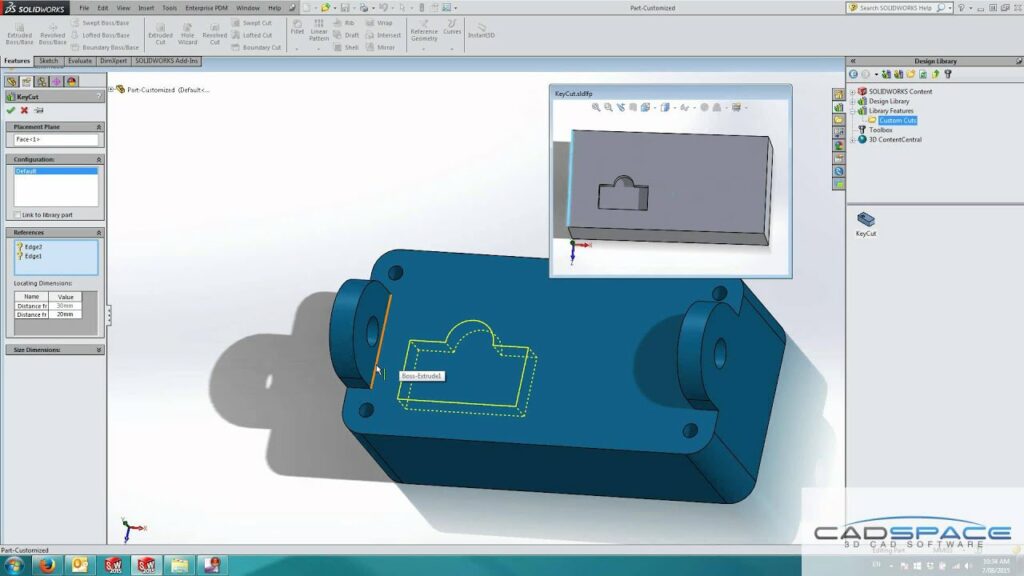Mastering Efficiency: A Comprehensive Guide to Utilizing Configurations with Library Features in SolidWorks

SolidWorks, a leading CAD (Computer-Aided Design) software, empowers engineers and designers to create intricate designs with precision and efficiency. One of its powerful features is configurations, which allow users to create multiple variations of a part or assembly within a single file. When combined with library features, such as commonly used components or design elements, configurations offer a streamlined workflow and enhanced productivity. In this exhaustive guide, we will delve into the intricacies of using configurations with library features in SolidWorks, from understanding their functionality to implementing best practices for efficient design management and optimization.
Understanding Configurations in SolidWorks:
- Configurations in SolidWorks enable users to create variations of a part or assembly by adjusting dimensions, features, or properties while maintaining a single file.
- Each configuration within a file can have its unique set of parameters, including dimensions, materials, appearances, and suppression states for features.
- Configurations are useful for exploring design alternatives, generating assembly variants, accommodating different manufacturing processes, or creating documentation for multiple configurations of the same design.
Exploring Library Features in SolidWorks:
- Library features in SolidWorks are pre-defined design elements or components that users can reuse across multiple projects or designs.
- Common examples of library features include fasteners, brackets, weldments, profiles, or custom-designed components saved in the Design Library for easy access and insertion into assemblies or parts.
- Library features streamline the design process, reduce repetitive tasks, and ensure consistency across projects by providing a centralized repository of standardized design elements.
Integrating Configurations with Library Features:
- By combining configurations with library features, users can create a flexible and efficient design environment that maximizes productivity and design reuse.
- Library features can be configured to adapt to different design scenarios or requirements, allowing users to insert customized instances of the same feature into various configurations within a single file.
- Configurations with library features enable users to explore design alternatives, iterate on concepts, and adapt designs to specific requirements without creating multiple files or duplicating work.
Best Practices for Using Configurations with Library Features:
- Organize Your Design Library: Maintain a well-organized Design Library in SolidWorks, categorizing library features into logical folders or directories for easy navigation and retrieval.
- Standardize Design Elements: Establish standardized design elements within your library features, such as naming conventions, dimensions, and configurations, to ensure consistency and compatibility across projects.
- Utilize Configurations Wisely: Plan your configurations strategically, considering factors such as design complexity, manufacturing requirements, and assembly variations to optimize performance and efficiency.
- Document Your Configurations: Provide clear and comprehensive documentation for each configuration, detailing its purpose, parameters, and design intent to facilitate collaboration and communication within your team.
- Regularly Review and Update: Periodically review and update your configurations and library features to incorporate design changes, improvements, or new components, ensuring they remain relevant and effective for current projects.
Optimizing Design Efficiency with Configurations and Library Features:
- Implementing configurations with library features in SolidWorks empowers users to streamline their design process, reduce development time, and enhance productivity.
- By leveraging the flexibility and versatility of configurations and the reusability of library features, designers and engineers can iterate on designs rapidly, explore design alternatives efficiently, and adapt to evolving project requirements with ease.
- Embrace these best practices and techniques to unlock the full potential of configurations and library features in SolidWorks, and elevate your design capabilities to new heights of efficiency and innovation.




